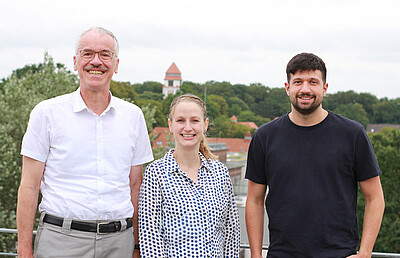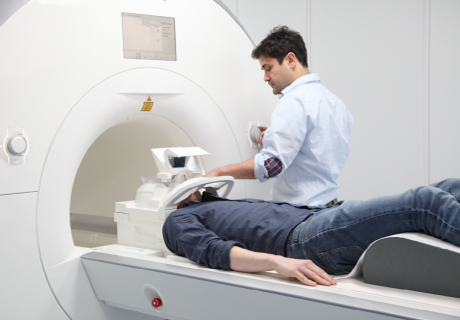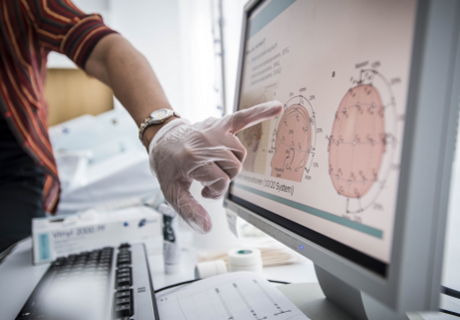Successful hosting of I-MOVE2025
From December 4-6, 2025, I-MOVE 2025 was hosted on an interdisciplinary basis by the Institute of Psychology, the Institute of Medical Psychology, and the Department of Neurology on the CBBM premises.
The necessity and importance of the conference topic, the integration of movement information into neuroscientific research, was highlighted in the presentations by keynote speakers Freek van Ede (Institute for Brain and Behavior, Vrije Universiteit Amsterdam), Marlene Meyer (Donders Institute for Brain, Cognition, and Behaviour, Radboud University, The Netherlands), and Giacomo Novembre (Neuroscience of Perception and Action Lab, Italian Institute of Technology, Rome) for different neurocognitive disciplines. The demonstrations on handling multimodal data (Julius Welzel, Kiel University) and online synchronization of multimodal data acquisition (Melanie Klapprott and Martin Bleicher, University of Oldenburg) were given as hands-on sessions. The Junior Poster Award went to Vaishali Vinod (Kiel University, “Preprocessing on the Move: An Overview of Preprocessing Pipelines in Gait-related Mobile EEG”) and Annika Werwach (Max Planck Institute for Human Development, Berlin, “Memories in motion: Tracking memory development in freely moving toddlers using mobile EEG”). We would like to thank all participants for making I-MOVE 2025 a success. Special thanks go to our student team for their tireless efforts.
Ursache für neurologische Komplikationen bei Diabetes
Forschungsteam aus dem Institut für experimentelle und klinische Pharmakologie und Toxikologie der Universität zu Lübeck veröffentlicht Studie zu Dimethylglyoxal in Nature Communications

Die Ursachen von neurologischen Komplikationen bei Diabetes sind bis heute nicht vollständig verstanden. Eine neue Studie unter der Leitung von Prof. Dr. Markus Schwaninger, Dr. Julica Inderhees und Riccardo Costalunga vom Institut für experimentelle und klinische Pharmakologie und Toxikologie der Universität zu Lübeck und der CBBM Bioanalytic Core Facility zeigt, dass das Stoffwechselprodukt Dimethylglyoxal (DMG) hierbei eine entscheidende Rolle spielt. Erhöhte DMG-Konzentrationen führen zu oxidativem Stress und kognitiven Beeinträchtigungen. Die Forschungsergebnisse könnten zu neuen Präventions- und Behandlungsansätzen bei Diabetes führen. Die Studie wurde in dem renommierten Fachjournal Nature Communications veröffentlicht.
Originalveröffentlichung: Rhein, S., Costalunga, R., Inderhees, J. et al. The reactive pyruvate metabolite dimethylglyoxal mediates neurological consequences of diabetes. Nat Commun 15, 5745 (2024). https://doi.org/10.1038/s41467-024-50089-3
Pressemitteilung: Ursache für neurologische Komplikationen bei Diabetes: Universität zu Lübeck (uni-luebeck.de)




